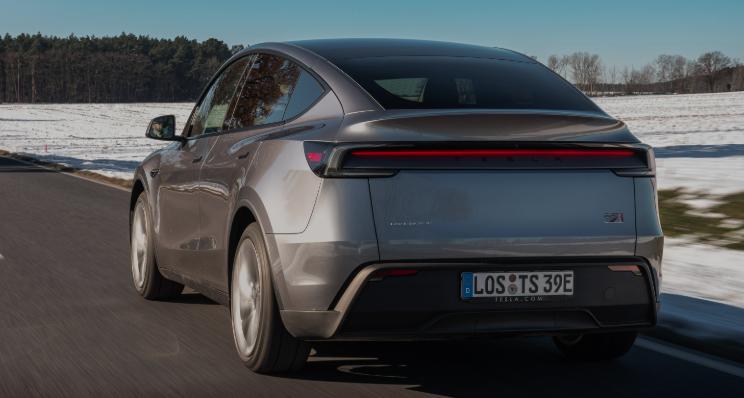The Tesla Model Y, a compact electric SUV, continues to gain popularity among EV buyers due to its balance of performance, space, and efficiency. But one of the most common questions asked by potential owners is: how far does the Tesla Model Y go on a full charge? This article offers a complete overview, from battery specs to driving habits, to help you understand the Model Y’s real-world range.
Official EPA Range Ratings for Tesla Model Y
Tesla offers the Model Y in multiple variants, each with a different battery configuration:
| Model Y Variant | EPA Estimated Range (Full Charge) |
|---|---|
| Long Range AWD | 330 miles |
| Performance AWD | 303 miles |
| Standard Range RWD (Discontinued) | 244 miles |
These ranges reflect ideal conditions—steady speed, mild weather, and no significant elevation changes. Real-world performance may vary.

Factors That Affect Driving Range
The Model Y’s driving range depends on more than just its battery. The following factors play a critical role:
-
Driving Speed: Higher speeds increase aerodynamic drag, reducing range significantly.
-
Terrain: Hilly or mountainous routes demand more power than flat terrain.
-
Weather: Cold temperatures lower battery efficiency and reduce regenerative braking effectiveness.
-
Driving Style: Aggressive acceleration and hard braking consume more energy.
-
Cargo and Passenger Load: Heavier loads increase energy consumption.
-
Wheel and Tire Choices: Larger wheels or performance tires can reduce range by 5–10%.
Charging a Tesla: Options and Considerations
Tesla owners have several options for charging their vehicles:
-
Tesla Supercharger: Fast DC charging at over 1,000 locations across the U.S.
-
Home Charging: Using a Tesla Wall Connector or NEMA 14-50 outlet for overnight charging.
-
Destination Charging: Slower Level 2 chargers located at hotels, malls, or parking garages.
-
Third-party Charging Networks: Via adapters for CCS or J1772 plugs.
Tesla’s navigation system intelligently routes drivers to charging stations and estimates charge times.

Charging Speeds
| Charging Method | Approximate Speed |
|---|---|
| Tesla Supercharger (V3) | Up to 250 kW (170 miles in 15 min) |
| Level 2 (240V, 32-48A) | ~25–44 miles/hour |
| Level 1 (120V household) | ~3–5 miles/hour |
Faster charging is possible when the battery is at a low state of charge and under ideal temperature conditions.
Charging Monitoring and Optimization
Tesla’s mobile app offers real-time monitoring of charging progress, estimated range, and charging cost. Smart charging features include:
-
Scheduled Charging to reduce electricity rates.
-
Battery Preconditioning before Supercharging to optimize speed.
-
Range Mode to reduce HVAC and power drain.
Charging a Tesla: Options and Considerations
Tesla Model Y drivers have three primary charging options:
-
Level 1 (120V): Standard home outlets provide around 3–4 miles of range per hour—suitable only for emergencies or very light usage.
-
Level 2 (240V): Adds 20–30 miles of range per hour. For daily home use, a dedicated Level 2 charger is strongly recommended.
-
DC Fast Charging (Superchargers): Offers up to 200 miles of range in just 15 minutes. Ideal for long-distance travel.
Recommended Home Charging Solution:
For dependable and high-performance home charging, the EVDANCE Flux Tesla 40A Charger is engineered specifically for Tesla vehicles, delivering reliable 240V charging at up to 40 amps. It includes built-in safety features, fast installation, and a smart LCD display that shows charging stats in real time. Its compact, weatherproof design makes it ideal for both garage and outdoor wall mounting. The charger supports Tesla's NACS connector directly—eliminating the need for extra adapters.
Tips for Maximizing Tesla’s Range
In addition to driving habits and battery health, charging logistics can impact daily range efficiency. If your charging setup is far from your usual parking spot—such as in rental homes, shared garages, or multi-vehicle households—using a safe and compatible extension solution is critical.

Recommended Accessory:
The EVDANCE Tesla Extension Cord 40FT offers a heavy-duty, weather-resistant cable rated for 40A Tesla chargers. Its 40-foot reach ensures flexibility in tight or inconvenient parking layouts without sacrificing power efficiency or thermal safety. Built with Tesla’s NACS standard in mind, it’s the perfect companion for your home setup.
Comparing Tesla’s Range with Gas-Powered Cars
While gasoline vehicles generally offer 300–400 miles per tank, EVs like the Model Y are closing the gap. Unlike gas stations, EVs benefit from daily home charging, reducing the need for long-distance stops. For daily commutes (under 50 miles), a full charge can last several days.

Tesla Battery Longevity and Warranty
Tesla’s Model Y battery is designed for long-term use:
-
Battery Warranty: 8 years or 120,000 miles (Long Range and Performance variants)
-
Degradation Rate: Tesla reports only 10% degradation after 150,000 miles on average.
Software updates frequently improve battery management and efficiency over time.

Maintenance and Replacement of Tesla Batteries
Tesla EVs require less maintenance than internal combustion vehicles. For batteries:
-
Cooling Systems and thermal management prevent overheating.
-
Battery replacement, while rare, can cost between $12,000–$16,000 out-of-warranty.
-
Battery Recycling is integrated into Tesla’s sustainability initiative.
Range Visualization Chart

Conclusion
The Tesla Model Y delivers an impressive balance of range, performance, and usability. With up to 330 miles on a full charge and a robust charging network, it suits both daily driving and road trips—especially with good charging habits and efficient driving.
See more blogs and news about Tesla on EVDANCE official website.
Author: Lay Wen.
Recommended Reading: How Far Does a IONIQ 5 Go on a Full Charge?








Share:
Understanding EV Adapters: Bridging Compatibility Across Charging Standards
How Far Does a Tesla Model 3 Go on a Full Charge?